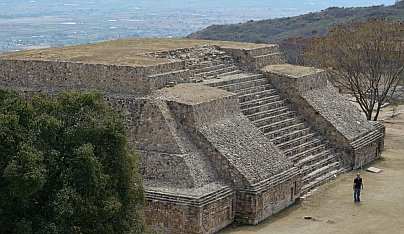Monte Alban
The languidies lived in the central Mesoamerica, specifically the Oaxaca Valley (now Mexico). Their first capital is Monte Alban. They dominated the region, spoke in different languages and created cultural and trade ties with the Olmecs and the Mayans.
Initially, the Habits developed agricultural communities that later expanded significantly in and around Oaxaca. They created fruitful trade ties with the Olmecs that enabled them to build the impressive capital of Monte Alban. The city, strategically located above the three main valleys, has developed over the centuries and has remained a cultural center even after the very collapse of civilization.
In addition to Monte Alban, the Ecstasy has ruined other outstanding neighborhoods and built over 15 palaces. The civilization was divided into four main groups: Hutches who lived in the valley, the Northern Cretaceans, the South Cretaceous and the istmeños Migrants who lived in the southern part of Teuantepec. Later, Mitla became the most important city for them, which was distinguished by its extraordinary buildings, which were located around large squares and had a remarkable design.

Cities of the Laundries show a high level of sophistication and refinement not only in architecture, but also in art, writing, engineering projects and irrigation systems.
The Enigma religion was rich and at the same time puzzling from a modern point of view. Their most important deities were related to rain, sun, wind, earth, and war. They had the god Bat - the god of fertility, Beido - the god of the seeds and the wind Cocijo - the god of rains and lightning, Pitao Cozobi - the god of corn, Copijcha - the god of the sun and war, Huechaana - the goddess mother, related to hunting and fishing , Kedo - the god of the oceans, Pixee Pecala - the god of love and Coqui Xee - the god creator who symbolizes infinity.
Monte Alban is built at 400 meters above sea level and turns into a residential, ritual and economic center for the civilization of the Laundries. In addition, he is also a place where they bury their dead rulers for more than a thousand years. The city is making significant progress in the pre-classical period when its population reaches 20,000 people and again in the period from 400 to 700 when the population reaches 40,000 people.
The power of civilization has slowly disappeared, but today there are a number of Membranes in Mexico and the United States. They belong to the "Indigenous Peoples of Mexico" and have their own language and dialects. "The new" Zapotecs respect the tradition in order to remind the world of this once, a great civilization.